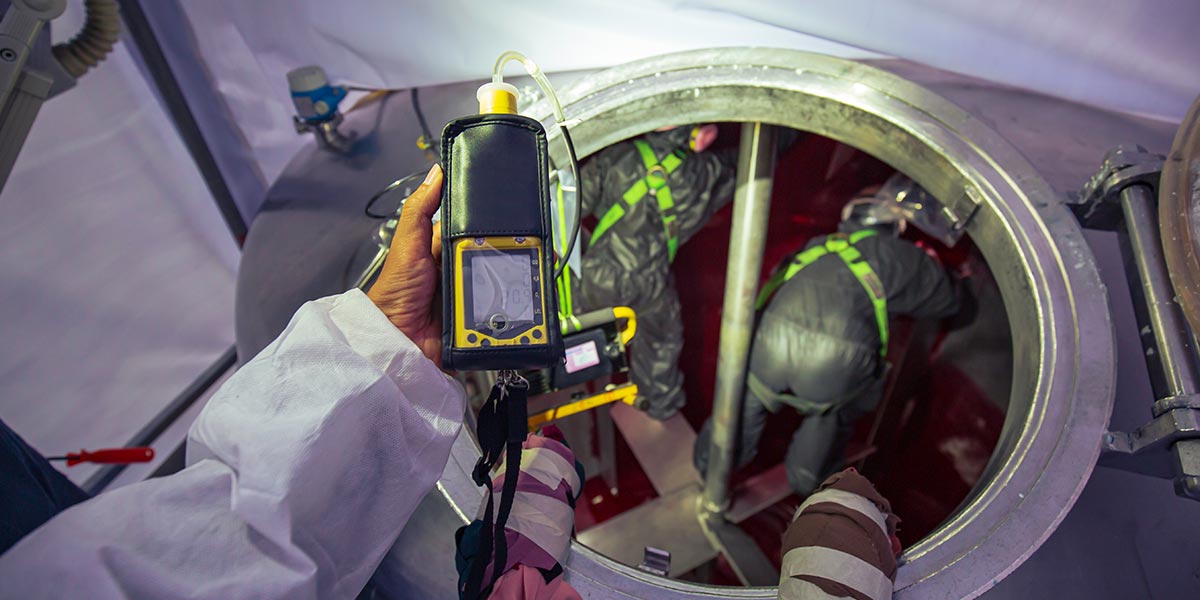Working in any confined space is not only a challenge but you, at times, face life risks. One may receive a critical injury, which might result in death also. The typical real-life examples are when we find the municipality workers working in drains, tanks, sewers or silos for repair or routine pre-emptive inspection.
A similar is the case when workers work in the mines and telecommunication when workers require to work underground. Getting into confined spaces without proper safety training, i.e., gas test atmospheres training and relevant awareness, is risky.
Working in confined spaces is a tricky business. But some industries like mining, oil & gas, telecommunication and industrial cleaning can’t avoid it. As a worker, you would find that your movement has many constraints in a confined space, as you can’t move as you would otherwise on the ground should something adverse happen. But with the gas test atmospheres training
and knowledge, you are in a better position to avoid problems and handle the crisis.
MILCOM’s Gas Test Atmospheres Training- An International standard Safety Course
The Australian Government has a Strategic vision of healthy, safe and productive working lives for each worker regardless of occupation. The Government has a firm principle that each employee has the fundamental right to a healthy and safe working environment.
Milcom Communications is committed to delivering high-quality safety awareness courses & training even in the confined working space to ensure that all members of the Telecommunications and Other
Technical Security industries are working to the correct safety standards and have the knowledge and competence to perform their tasks in the various work environments they will encounter. Our gas test atmospheres training ensures students are learning in a supportive environment that keeps them safe and reinforces the importance of workplace safety.
Objective Of the Course
The course on Gas Test Atmospheres trains workers working in risky confined spaces technicians to sample, monitor, test, and identify the elements that may be hazardous. It applies to circumstances where someone must conduct an atmosphere gas test before entering a space or workspace. The skills and knowledge are needed to test the working environment using electronic test equipment to see if it is safe to work in the area, keeping life secure.
The gas test atmospheres training near me @Melbourne is intended for workers who may be required to monitor potentially risky environments within the communications carrier network. The course teaches the expertise necessary to use electronic test equipment to assess the working environment and determine whether it is secure for the proposed work.
It applies to circumstances where a worker must conduct an atmosphere test before entering a particular space or workspace, interpret readings, and act based on these readings.
Gas test atmospheres training is delivered by our highly experienced instructors @MILCOM, who have a strong background in HAZMAT response. This training course will teach trainees:
- When is gas testing required?
- How to conduct gas testing?
- How to determine if the atmosphere is safe to work in?
MILCOM’s Gas test atmospheres training – Our Course Outline
- The legislative framework for gas detection in working space
- Finding when gas testing is required
- Shift Supervisor responsibilities
- Requisite Gas testing permits to work.
- Atmospheric monitoring requirements and risk assessment
- Requirement of Confined space permit
- Study of Oxygen deficiency, oxygen enrichment, lower explosive levels, carbon monoxide, hydrogen sulfide, methane and other gasses
- Exposure limits: TWA’s, STEL’s, IDLH’s etc.
- Air densities of various gasses and implications
- Gas testing log sheets
- Gas detector maintenance
- testing and calibration requirements
Gas detector records

